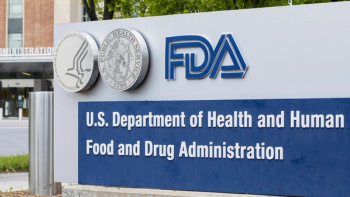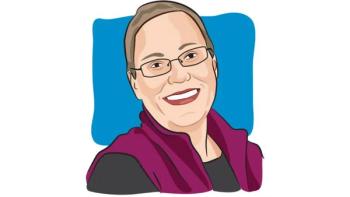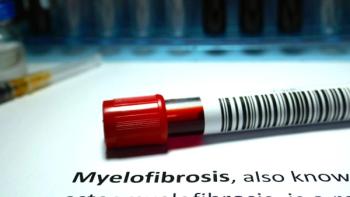
Myeloma Specialists Share Their Treatment Strategies
Experts in multiple myeloma share the newest information on the goals of therapy in symptomatic disease, testing for minimal residual disease, the role of transplantation, and the use of maintenance therapy.
Multiple myeloma treatment has significantly changed over the last ten years. People who have this disease are surviving longer than ever before because several new drug classes with highly effective therapies have emerged, including immunomodulatory drugs, proteasome inhibitors, monoclonal antibodies, and histone deacetylase inhibitors.
Greater understanding of tumor biology has also enabled doctors to experiment with novel treatment combinations and spurred new drug development. The diverse nature of multiple myeloma has led the National Comprehensive Cancer Network to recommend individualizing treatments to improve patient outcomes.
A recent
Goals of Therapy for Symptomatic Patients
The panelists agreed that the goal of therapy is to achieve MRD-negative complete remissions, but that the timeline for achieving this goal varies by patient.
“For elderly patients, I think you must compromise a little bit on efficacy for the tolerability and safety…achievement of a deep response is important for these patients, but it may take a little longer than in the younger patients,” said Saad Z. Usmani, M.D., FACP.
This approach was supported by Thomas G. Martin III, M.D. who concurred that the road to a complete response (CR) can be significantly longer in older populations. “I tell them, ‘You’re going to be on therapy for, potentially, upwards of a year. Hopefully each month [the need for therapy] will go down—slowly, slowly, slowly,’” he said.
In contrast, patients with more severe disease often require a quick response. Ivan M. Borrello, M.D., noted, “[In most patients], if the trend is going in the right direction, I think [we can] deliver therapy with potentially less intensity and less toxicity over a longer period of time.”
Frontline therapy choices among the panelists varied based on patient factors and institutional practices, but all panelists reported using combination regimens, with most incorporating Velcade (bortezomib) and Revlimid (lenalidomide) into their protocols, preferring 3-drug regimens for younger, more fit patients, and 2-drug regimens for older and more frail patients.
“For the transplant-eligible patient, our upfront regimen of choice is bortezomib with lenalidomide and dexamethasone. For the older, truly frail patient, it’s probably lenalidomide and dexamethasone. And now there may be talk about an antibody there,” said Sagar Lonial, M.D., FACP.
Although 2-drug regimens were generally regarded as safest for less robust patients, Borrello said his institution has used 3-drug regimens in some elderly populations, although at lower dose intensities.
Most panelists did not routinely use Kyprolis (carfilzomib) combinations upfront, but Martin reported using it with Revlimid and dexamethasone in younger and more fit patients and in those with high-risk cytogenetics. Others noted they might start using it as an upfront therapy based on emerging data. The most unique regimen was reported by Gareth Morgan, M.D., FRCP, FRCPath, Ph.D., whose institution uses combinations with classic chemotherapy agents to enable harvesting stem cells for eventual stem cell transplantation.
MRD Testing
Because improved multiple myeloma treatments have led to higher CR rates, there has been a need to redefine response criteria to enable identification of deeper responses than were conventionally possible. This has led to the emergence of flow cytometry and, more recently, next-generation gene sequencing to identify residual tumor cells in the bone marrow. The panelists identified numerous pros and cons with each testing method.
Flow cytometry was reported to provide results more quickly, typically within 24 hours, whereas gene sequencing results have been slower, often taking a week or longer to obtain. Reported benefits of next-generation sequencing included not needing a fresh sample and more consistent results.
“There’s a lot of variability with flow cytometry that’s operator-dependent, antibody panel-dependent, and many other things,” explained Borrello.
While the panelists varied in their testing methods and preferences, Morgan reminded that both flow cytometry and next-generation gene sequencing have roles to play and might sometimes be beneficial when used in combination. A major challenge that remains is standardizing the MRD-negativity threshold across clinical trials, regardless of which testing method is used. The panelists acknowledged that MRD testing is not ready for clinical application outside of clinical trials just yet.
Role of Transplantation
While the goal has been to eliminate transplantation, the panelists noted that it remains an important therapeutic option despite the advent of many new highly effective therapies.
“If you can tolerate [autologous stem cell transplant], it should be one of the major tools for newly diagnosed patients,” said Morgan.
The panelists proceeded to discuss an important study recently published by Attal and colleagues in the New England Journal of Medicine, which showed transplantation to have some benefit over use of a 3-drug regimen alone.
“I think that when you [discuss treatment] with the patient, you want to pick the choice that gives your patient the best chance for getting to a deep remission—MRD negativity—and that’s what you get with early transplant,” said Usmani.
The panelists also discussed the StaMINA trial, which is the largest trial to date assessing transplantation in patients with multiple myeloma. The study results were presented at the 2016 American Society of Hematology Annual Meeting, but have not yet been published.
“The StaMINA trial compared single transplant with a tandem transplant and a single transplant with consolidation, with the hypothesis that deeper remission would result in longer progression-free survival,” said Stewart.
“It didn’t really seem to show that very conclusively,” he noted. The thought has been that the study’s findings might lead to fewer second transplants, supporting a less-is-more approach, but follow-up is ongoing and many panelists felt that it is premature to draw such conclusions.
Maintenance Therapy
The panelists started their discussion of maintenance therapy by examining a trial led by Morgan that assessed the use of lenalidomide in this setting. In the study, lenalidomide maintenance was associated with a significantly longer median PFS versus observation across all subgroups, including those with high-risk disease.
“I think [this trial] was the final piece of evidence that really supports the use of [lenalidomide] maintenance compared with no maintenance … we should have OS [overall survival] data by the end of the year,” said Morgan.
Results were improved if maintenance continued past the first year, he noted. While continuation until progression was considered ideal, the panelists acknowledged this is typically not possible because of toxicity.





